"If my theory of relativity is proven successful, Germany will claim me as a German and France will declare that I am a citizen of the world. Should my theory prove untrue, France will say that I am a German and Germany will declare that I am a Jew." -Albert Einstein
One of the most famous scientific developments in the 20th century was the revelation that the Universe had a speed limit: the speed of light.
Clocking in at exactly 299,792,458 m/s, Einstein's theory of relativity states that any particle with mass can only approach -- but can never reach -- this maximal speed.
This was tested most accurately for the neutrino (fun facts here), the lowest mass particle ever discovered -- over a million times lighter than a single electron -- to still have mass.
In 1987, a supernova from 168,000 light years away went off, with the first neutrinos and the first light (above) reaching our eyes within just a few hours of one another! This tells us that the speed of these neutrinos differs from the speed of light by, at most, two parts per billion!
Which is just one reason why last month's experimental claims that neutrinos move significantly faster than light have come under heavy fire.
Since the OPERA collaboration announced that they had created ultra-relativistic neutrinos 732 kilometers away from their detector, and after a 2.43 millisecond flight, the neutrinos were detected an average of 60 nanoseconds too early, the main question on physicists' minds has been to discover exactly what's going on here.
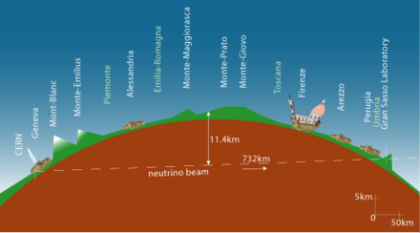
The overwhelming consensus is that we have somehow fooled ourselves, and the race has been on to discover exactly where the mistake is. I even went on the news to talk about it.
Did they account for all of the effects of relativity? Was there a goof between the atomic clocks? Many others weigh in (e.g., the comments here), and arguments are currently raging across the world between those defending the experiment and their detractors.
From CERN, huge numbers of protons -- something like 1020 of them -- are smashed into a target beneath the ground, creating a myriad of particles, including the elusive muon neutrino. This beam is directed underground towards the giant scientific research station beneath the mountain of Gran Sasso. While the other particles collide with the intervening Earth, the neutrinos hardly interact at all, and fly freely towards their target, hundreds of kilometers away.
In the meantime, a lesser-known experiment, ICARUS, also capable of detecting these muon neutrinos, was also taking data deep beneath the mountain in Gran Sasso, where this neutrino beam was aimed in the first place.
And if these neutrinos are really moving at speeds greater than the speed of light, a second experiment should be able to confirm or refute whether this is what's really going on!
Using a liquid-argon detector, ICARUS is able to detect muon neutrinos that interact with the atoms inside, producing a characteristic signature that's dependent on the energy of the muon that gets created by these interactions.
By measuring the angle shown in the image above, they can reconstruct the energy of the muon that created this signal. Over the past year or so, they've observed just over 100 events; not a statistical goldmine, to be sure, but enough that they can compare their data (blue dots, below) with the expected event distribution (red line) from Monte-Carlo simulations.
Based on this information, they can go ahead and reconstruct the information about the muon neutrinos that caused these events, including what their energy distribution is, and compare it with the expected theoretical distribution.

The match is pretty good, for as much as you can determine with barely 100 events.
But, of course, this is assuming standard physics, with neutrinos that move slower (even if just barely) than the speed of light. We have all sorts of experimental and observational constraints on how much faster than light neutrinos are allowed to move, but many of these results take place at different energies for the incoming neutrino. Matt Strassler has compiled a very nice set of data showing this on a single graph.
What's perhaps even more interesting is that -- just as particles moving faster than light in a medium emit light known as Čerenkov radiation -- if neutrinos are moving faster than the maximum speed of electrons/positrons, they should emit an analogous type of radiation! A recent paper showed this, and these electron-positron pairs that would be radiated by a superluminal neutrino are now known as Cohen-Glashow radiation. The hoops one has to jump through to explain the OPERA result are incredibly dissatisfying.
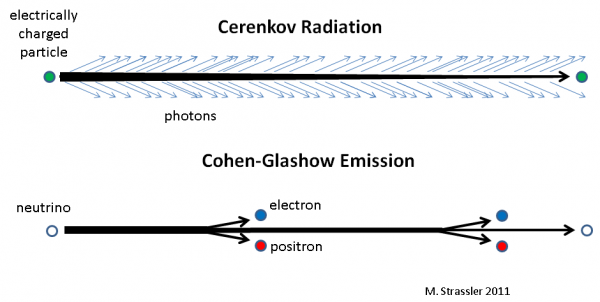
Here's the thing, though. ICARUS has the same source for its neutrinos as OPERA does, but is a completely different experiment.
Based on Cohen-Glashow radiation -- which, remember, is just standard, known physics combined with neutrinos moving at OPERA's claimed speeds -- ICARUS has gone and calculated what they would see if these neutrinos really were moving faster than light, and they don't see that! (Tommaso Dorigo has the first analysis up, here.)
I've taken the liberty of taking the ICARUS graphs and superimposing what they would have seen if these neutrinos had been moving faster than light.

First off, the incoming neutrinos (although this is an extrapolated, not an observed, quantity) would have had their energies cut off at somewhere between 12 and 20 GeV. (See Strassler for a nuanced discussion of why.)
If your incoming muon neutrinos are lower in energy, it stands to reason that the muons they produce will be lower in energy, too. What would ICARUS have seen?
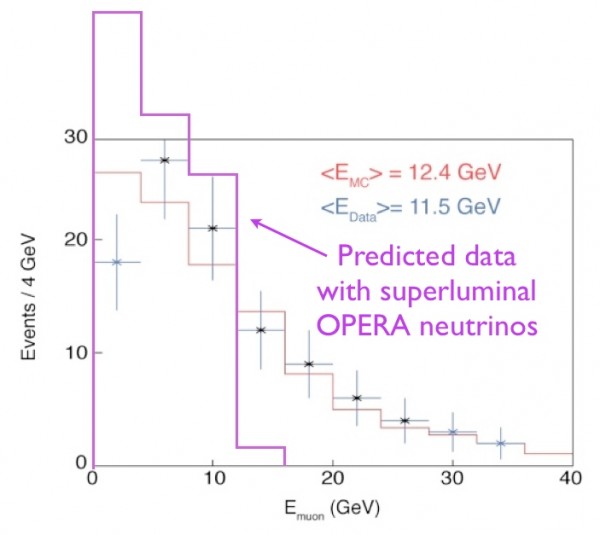
This is a huge difference! Were there actually a cutoff in neutrino energy due to this Cohen-Glashow radiation, we would see a very different energy distribution (purple line) than was actually seen by ICARUS!
In fact, as Tommaso so correctly notes:
They find that the energy spectrum of the detected neutrino interactions in ICARUS shows a very nice agreement with the expectation for well-behaved light-speed-moving neutrinos. A very dramatic distortion of that spectrum would instead be expected for the speed measured by OPERA, such that indeed ICARUS can place a very tight constraint on the superluminal speed of the CERN neutrinos: consistent with the speed of light, and not larger than that by more than four part in ten billionths.
...
If you are unfamiliar with millionths and billionths, I can make it easier for you: the ICARUS result says that the difference between the speed of neutrinos and the speed of light cannot be as large as that seen by OPERA, and is certainly smaller than that by three orders of magnitude, and compatible with zero.
Based on the ICARUS data, I've edited Strassler's chart to include the ICARUS constraints:
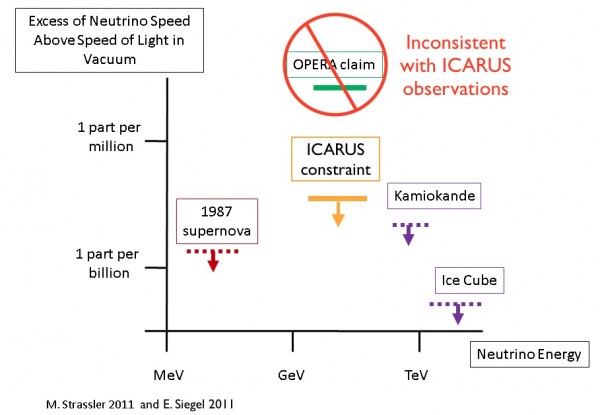
So there you have it: while physicists are still arguing over just where the OPERA collaboration's mistake is, another experiment seeking to check their result has found wild inconsistencies with OPERA's claims. So congratulations to ICARUS on a very clever use of their apparatus, and for those of you who aren't afraid of details, check out the ICARUS paper for yourself!
There might yet be some clever way to break the speed of light, but if there is, we haven't found it yet, and OPERA's claims to the contrary look to have just suffered a fatal blow!
(This article is dedicated to the memory of Lewis & Clark student Isaac Clark, who was always game to learn more about the workings of the Universe, and who really would have loved to know the latest on the faster-than-light neutrino saga. Isaac sadly passed away yesterday, and will be missed.)

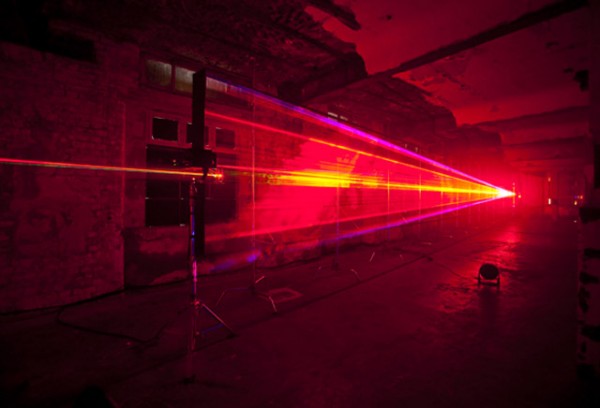
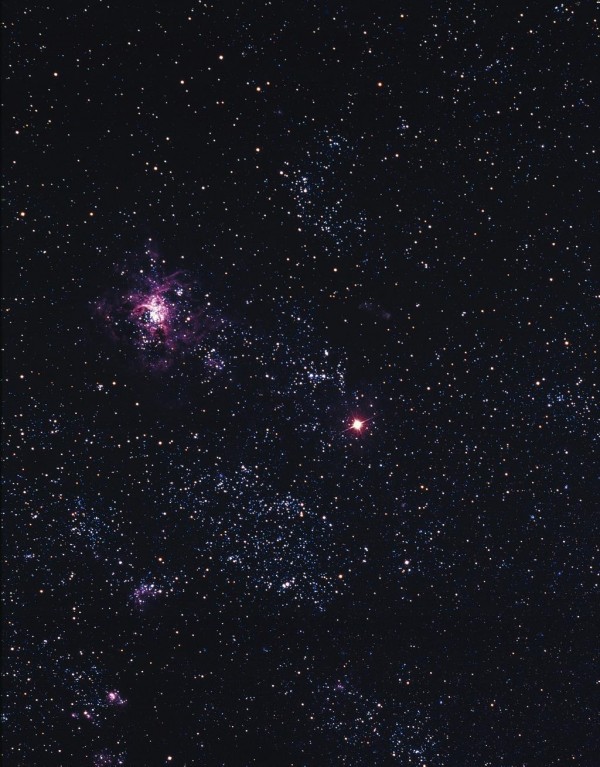
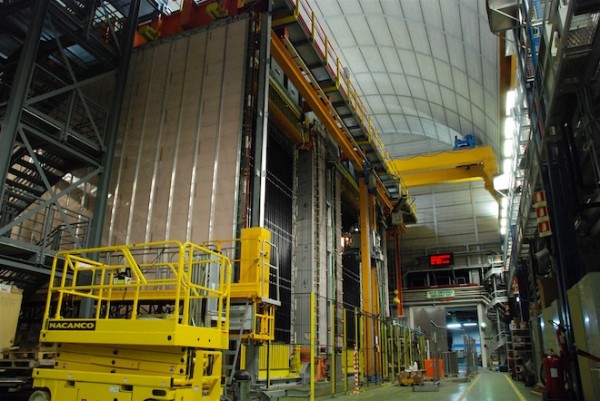
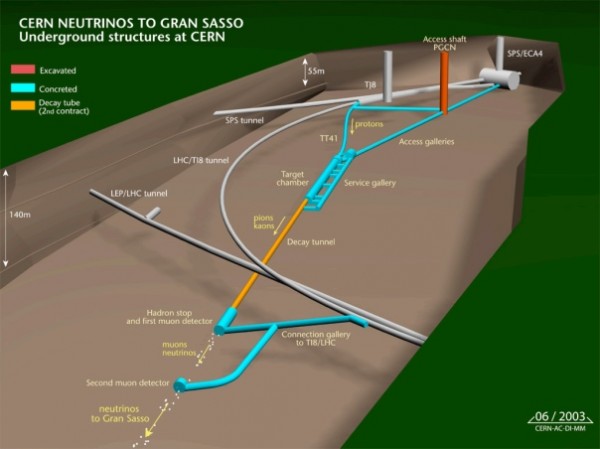
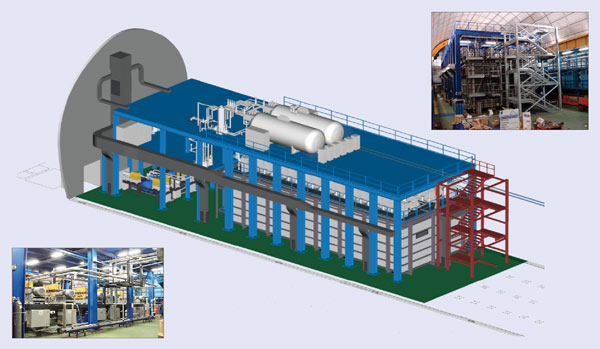
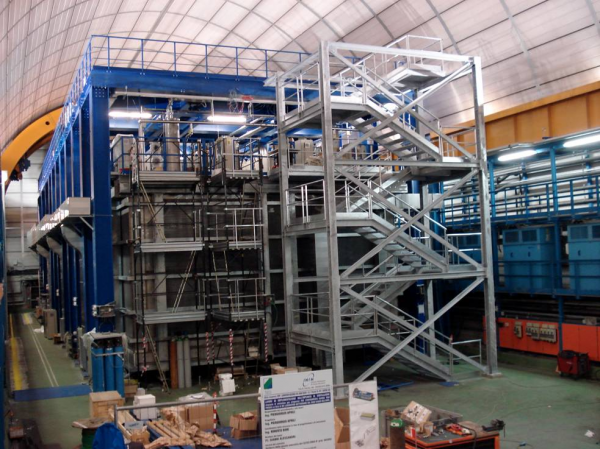


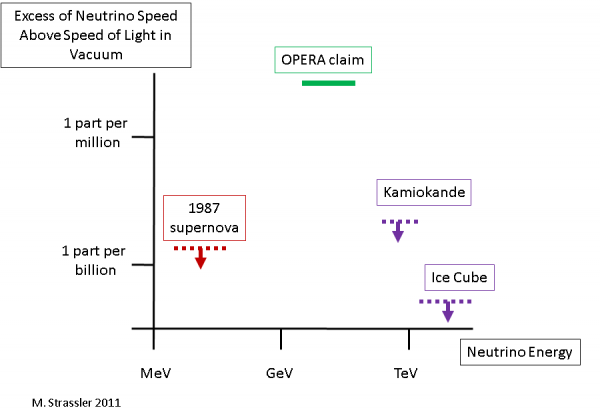
Hello Ethan,
Here's what I wrote to Ron. You should look at your geometry again. And also, as I suggest below, read A. Garciadiego, BERTRAND RUSSELL AND THE ORIGINS OF THE SET-THEORETIC 'PARADOXES.'
Hi Ron,
I am cc'ing Henryk Frystacki on this email. He wrote me an email when the CERN results appeared and referred to Victor Maslov, who is also cc'd on this. Henryk, Ron's paper (linked below), which came out a few days ago, confirms what I wrote to you, that the issue in the CERN experiment has to do exclusively with the relativity of simultaneity, and the discussion will rapidly narrow down to the continuing viability of the relativity of simultaneity. This is issue is now joined, as I predicted.
I said at the time that the CERN experiment was experimental confirmation of the idea I suggested in 2008 (paper also linked below), that there is no logical content in the relativity of simultaneity because Einstein purposely included in it what I call a "constructivist intervention" in the form of a "natural" coincidence, a notion which plays no logical role in the relativity of simultaneity. The question was: can we design an experiment involving light which does NOT include "natural" coincidence? That is the CERN experiment.
As I say below, Einstein felt compelled to include "natural" coincidence in the relativity of simultaneity. The notion is implicit in the "clock" experiment--whcih is probably why you have not yet identified it as an issue--but it was made explicit as early as 1916, in the "train" experiment which Einstein formulated for Relativity: The Special and General Theories. From there, he was able to give a very full and explicit profession de foi in constructivism, in his lecture, Geometry and Experience. That title alone should tell you that Einstein has a project for formulations which do not have logical content. The notion of a "natural" coincidence ("fallt zwar...zusammen") has been explicit since Relativity: The Special and General Theories, from which I quote Einstein's original German.
Indeed, there were immediate attempts to correct the notion and make the relativity of simultaneity possess logical content. If you examine the French and Italian translations of Relativity: The Special and General Theories, you will see changes to Einstein's text, in which the translators are unconsciously trying to correct the relativity of simultaneity to take out "natural" coincidence, because unconsciously those translators know there is a logical problem with the notion.
Ron, it is for this reason that I don't think you can counter the CERN experiment with the "clock" experiment, and it is a mistake to pursue that line of argument: the "clock" experiment is the "train" experiment, and it contains the notion of a "natural" coincidence just as the "train" experiment does. "Natural" coincidence is an irresolvable anomaly in the relativity of simultaneity. The "clock" and the "train" experiment are the same experiment, and can be mechanically transposed, one into the other. There is nothing you can do to give the relativity of simultaneity logical content. It simply possesses none.
So to say that the CERN experiment is the "clock" experiment, does not overcome the CERN results, because the CERN experiment is not the "clock" experiment. That is the point.
The point of the CERN experiment is that it does not include "natural" coincidence. It is not proceeding from the same assumptions as Einstein uses. It comes from a different intellectual orientation. It is a critique of the notion of "natural" coincidence and is experimental confirmation that "natural" coincidence is the logical flaw in the relativity of simultaneity.
What the CERN experimenters are saying is that there is no such thing as a Standard Model experiment. There is no counter to this assertion.
I predict that what your paper will do is elicit from the CERN experimenters, more of their intellectual orientation, and that will be as follows: whatever the model is, it cannot be relativistic because relativity contains an anomaly, "natural" coincidence. I have been right so far, and I will be right about this as well.
Once you learn more about constructivism, you will realize that Einstein is not wrong. He never set out to have the relativity of simultaneity possess logical content, because Poincare--and the general constructivist tradition--had convinced him that constructivist interventions, such as "natural" coincidence had to be made in logic in order to avoid having it end in paradox. Do you believe that as well?
As I say in the paper, one of the results of our current renaissance in the historiography of set theory is that none of the candidates for the title "paradox" have any logical content. If you disagree, let me know of a paradox which you feel has logical content.
But before you do, I strongly suggest you read the classic in the new historiography of set theory, A. Garciadiego, BERTRAND RUSSELL AND THE ORIGINS OF THE SET-THEORETIC 'PARADOXES.'
Cheers,
John Ryskamp
http://arxiv.org/PS_cache/arxiv/pdf/1110/1110.2685v1.pdf
Ryskamp, John Henry, Paradox, Natural Mathematics, Relativity and Twentieth-Century Ideas (June 17, 2008). Available at SSRN: http://ssrn.com/abstract=897085
You're a way too harsh on OPERA. They're not making wild claim of 'OMG, we went faster than light, OPERA rulz, k?' They were extremely careful not to do that.
They're smart people, they did a good experiment, did all the careful checks, couldn't find a mistake in their analysis, so they opened their methods and data to the scrutiny of the whole community. And no-one has been able to find their mistake yet.
Your analysis here isn't the slam-dunk one might wish. Cohen-Glashow radiation isn't 'standard known physics', it's never been observed. It's a theoretical idea. There are plenty of other ideas going around that would modify the physical laws to make apparently super-luminal neutrinos OK.
I'm not saying whether the OPERA result is a fluke, a mess-up or a correct measurement. But it's sure not so easily dimissable as this.
Declaring a fatal blow for the OPERA anomaly is premature. ICARUS "refutes" OPERA assuming Cohen-Glashow radiation. Cohen-Glashow radiation has not been observed (understandably, since it deals with ftl particles), indeed I'm not aware of Bremsstrahlung being observed for the nuclear-weak force at all (granted, my knowledge there is limited). To reject an experiment, because it doesn't agree with theory, is to put the cart before the horse. This is all parcel of the standard model, which is very well supported experimentally, but as the link to dark neutrinos shows, there are alternatives for extending the standard model into high energy ranges.
To the limit of my understanding, this refutation takes what is known about the electromagnetic force and applies it to the nuclear weak force. While those forces may unify, it's not obviously true that they act the same way at energies where they aren't unified. Consider that special relativity was developed to understand electromagnetism and light: light is experimentally measured at the same speed no matter what speed the measuring apparatus travels at. However, neutrinos are electromagnetically neutral. They do not interact with light. Thus the restriction that they obey relativistic laws in the same way as a charged particle seems under-supported to my thinking.
OPERA is still a revolutionary result, and needs (and is receiving) a great deal of scrutiny. I don't see these results, however, as in any way refuting the anomaly.
Hello Ethan,
thank you for another nice post. I'm not a HEP physicist but after reading through Cohen & Glashow paper, two things really bug me. They "assume" that a superluminal neutrino (if they exist) would lose energy through some type of radiation. And then they assume that it will have the same properties as Cerenkov radiation. So it's a hypothesis at best. How can something like that be used as proof of anything? It's not an experiment.
I'm not saying that OPERA's measurements are correct and this isn't. Just that their paper doesn't seem to have any experimental proof. Am I wrong?
Personally, I am neither for nor against until MINOS and others repeat the experiments.
I think there is a serious flaw in your graph from Matt Strassler, or I'm not following why you slapped that graph in the middle. IceCube has yet to correlate any High energy TeV or GeV neutrinos to a Gamma Pulse. This is what it was made for. If anything it only has been able to correlate only the lowest energy neutrinos with these energy pulses. From the data IceCube has they should have seen at least 4 of these events from the last time I ready anything about their results. If they find one then we will know that OPERA made a mistake. However, if OPERA didn't make a mistake and thus neutrinos have an imaginary mass then IceCube will never be able to find them the way they are currently looking.
I'd rather have raw data dispute them then someone using a Hypothesis about how FTL objects should behave, or how standard physics that likes to make Tachyons unstable would be able to be applied to them if they ever were found and be stable.
p.s. further, in ICARUS paper, they say that they haven't observed a single electron/positron pair (predicted by CG)for 2010 and 2011 runs of OPERA beam. So I'm really unsure what ICARUS paper is really trying to prove? Their measurments graphs don't have much to do with C&G paper, nor much about neutrino velocity or beam distribution of OPERA. What's the relevance of this?
Since according to Special Relativity,"faster than light" implies "backwards in time",shouldn't the neutrinos be detected BEFORE they are emitted ?
Thank you, John Ryskamp, for this excellent description of what's wrong with the 21st century, and specifically with America's current Republican candidates.
Natural mathematics does not, as you claim, attribute itself to perception. Rather, it strives to avoid the perceptual bias of religious and spiritual arguments. In the train experiment, Einstein shows two different ways of perceiving the process. It is you, not Einstein, who would claim that perception is king, and that two different processes had occurred. This is something Republicans pride themselves on, in things as large as the entire cosmos, in things as small as their personal lives, and everywhere in-between.
For example, the politician says "You say you need help finding a job. I say you don't want a job. There is no such thing as a point of coincidence between these claims. Therefore, I can cut funding for the job training program you're taking in my coordinates, and the other job training program in your coordinates, which the Constructivists give the same name and address to, and which they staff with identical people, connected in pairs with handcuffs that bend light so they look like one, in order to spread the lie that they're the same program. And that won't deprive you of anything because your job coaches are as lazy as you are, and they're just being dragged along as my job coaches do all the work."
It's interesting that you don't conclude your essay. You just repeat most of it. Perhaps you originally had a 35-page essay, concluding with things that marked you as the Conservative you are. And then to cover up your agenda, you deleted it, and replaced it with a repetition of the rest up to 35 pages, so someone who doesn't proofread (very common these days) wouldn't notice this drastic edit.
You leave a lot of major concepts unexplained. Specifically, you never explain the oft-repeated question of what "light" means in all these people's theories. Perhaps it was originally a Bible-thumping innuendo about Lucifer?
@7. No. Faster than light implies opposing views (literally) of which event came first. Presumably, causality would hold in the rest-frame of the device that detected the neutrinos. But the device that sent them might not agree.
As long as there is only this one example of an ftl signal, there is no way to test violation of causality, because there's no different type of signal to send back to "corroborate", within the brief time that the two detectors interacted, the claim that one of them made about being the receiver.
So what do I tell my HS students? Until we've got a better answer than relativity, we'll stick to "relativity with flaws" over the unknown.
The online Discover article linked to above with the tag "relativity" (http://blogs.discovermagazine.com/badastronomy/2011/10/15/followup-ftl-…) involves a claim that the OPERA scientists did not take relativistic effects into account when they used GPS for precise timing. In fact, the GPS system design accounts for both special and general relativity. Unless the OPERA scientists developed their own GPS timing hardware and wrote their own fundamental software, this objection is invalid.
In doing so, they would lose energy. Do neutrinos lose speed as they lose energy, like other mass-having particles, or do they work differently?
Wouldn't the superluminal neutrinos have shed a lot of their energy in electron/positron pairs by the time they had reached the other end? Did the calculations account for that?
Ethan - science should not dissolve into hype. These new results do not at all prove what you so much wish they should prove:
http://www.science20.com/alpha_meme/icarus_proves_neutrinos_more_10_tim…
T's article is not an "analysis". He just jumps to conclusions.If this is what science blogging is about, then we may better stay with the mainstream media.
This tells us that the speed of these neutrinos.
What Eoin said. I realise you can't be expected to reiterate every nuance of a paper every time you discuss it, but the repeated references to "OPERA's claims," and the tone of those references, gives a very misleading impression of the way the OPERA team presented their results.
Mm commenter no. 8 is angry and trolling. Just so we're clear.
Both commenter 1 and 8 are trolling, in fact. The paper referenced in nr. 1 reads as a repeat of the infamous 'Sokal hoax', pepetrated during the nineties in the journal Social Text - but this time with a right-wing slant.
There is a fun article by Steven Weinberg about this: http://physics.nyu.edu/sokal/weinberg.html
Also worthwhile is the Wikipedia article on the Sokal affair, and John Baez' brilliant dissection of the later Bogdanoff Affair (a 'reverse-SOKAL'): http://math.ucr.edu/home/baez/bogdanoff/
Actually, it is best simply to ignore both nr. 1 and 8.
Well here
http://www.newscientist.com/article/dn21064-neutrino-watch-speed-claim-…
is an update 25 minutes ago on New scientist.
It seems to say that the to leading explanations are
1 )Ethan's, i.e. Sheldon Glashow and Cohen's paper.
2) @1 John Ryskamps, i.e. Ronald van Elburg 's paper
Now the problem with 1) Ethan's i.e. Glashow and Cohen's paper (explanation) is that it requires that there is a MISTAKE in the CERN OPERA experiment.
Whereas the nice thing about 2) @1 John i.e. Ron van Eiburg's paper (explanation) is that it is in agreement with the Opera experiment, in agreement with special relativity and interprets the 64ns descrepancy as a subltle special relativity error by the CERN OPERA theorists. i.e. the correct special relativity calculation adjusts for precisely the missing 64ns. Nice!
So 2) Ron van Eiburg's paper makes the point that special relativity is not so simple and even the experts can misapply Einstein's ideas and equations. And thus, by the way all, our English translations of Einstein's special relativity may be incorrect on a subtle idea.
So (to me) Ethan's i.e. Glashov and Cohen's explanation seems wrong; because it requires that CERN's OPERA experiment has an experimental error. Whereas @1 John ie. Ron van eiburg's explanation seems correct because it requires the CERN OPERA data and requires that special relativity be correct.
OK, I'll watch and learn.
@17 Hmm perhaps @1 John Ryskamps, i.e. Ronald van Elburg's paper is a hoax; then New Scientist has been taken in as well. Which of course is likely; their writers are no more experts than I.
OK, I continue to await expert opinion.
@OKThen,
Sigh... I should have been a tad more precise.
With "the paper referenced in nr. 1" I meant the one mentioned at the very bottom of that post:
Ryskamp, John Henry, Paradox, Natural Mathematics, Relativity and Twentieth-Century Ideas (June 17, 2008). Available at SSRN: http://ssrn.com/abstract=897085
which most certainly resembles a Sokal hoax.
I was NOT referring to the link to Ronald van Elburg's paper, which may (or may not) be an explanation of the effect. It is not clear yet whether GPS already compensates in this particular application. Also, it is not entirely clear from the OPERA documentation whether their timing method depends on the GPS signal only, or on other methods as well. Way too early to say.
This ought to be evaluated dispassionately and in detail. No need to hurry, no need to jump to conclusions. It is just one of many things to check out. :)
Latest version of van Elburg's preprint is here: http://arxiv.org/abs/1110.2685
Eoin @2, Ivan, and others with similar criticisms,
Do I really need to reiterate that, no matter how many times I've said it in previous articles on this site?
Here: http://scienceblogs.com/startswithabang/2011/09/this_extraordinary_clai…
and here: http://scienceblogs.com/startswithabang/2011/09/are_we_fooling_ourselve…
The fact is that when OPERA released this result without releasing their full methodology and analysis (so how could one reasonably criticize it; we don't know what they did and didn't account for), they knew (or at least, should have known) how this would be received by the press. Anyone who's worked in experiment (including me) knows that a big problem is you identify and quantify all of your sources of error until you think you've got them all accounted for and/or the results match the prediction, and then you stop looking. I think the onus is on OPERA to show that they haven't missed something in their error analysis, and although they both know and admit it, they can't expect someone to swoop in and "find their error" until they release, fully, what they've done.
Sascha and others:
The Cohen and Glashow paper basically says, let's assume these neutrinos do what OPERA sees them doing, and let's apply standard model physics to them, with standard electroweak (and relativity-obeying) photons and electrons/positrons.
The ICARUS calculation shows that if this is the story, then the OPERA result should be considered falsified at the level claimed in their paper, by Tommaso, and by me. If you are willing to entertain that the OPERA result is robust in light of this, then your only conclusion can be that the standard model doesn't apply to these neutrinos. It may not, after all, but if not, that's perhaps an even bigger story than violations of relativity.
FWIW, I agree with Baez's recent take that we will want to do more before we consider the OPERA result dead, but it's nice to know it requires not only violating SR, but also throwing out the EW standard model for these neutrinos at some high energy level, while they so thoroughly obey the SM at lower energies (and, if the Super-K results are to be believed, at higher energies, too).
Also, Sascha, re: your argument about this being a confirmation of MINOS' 1.8 sigma result, that's a pretty hard argument to swallow. Are you telling me that if MINOS had seen a zero-sigma result, you'd still conclude that there was a 50% chance that they were seeing FTL neutrinos, based on their error bars? At what level of significance do you declare "this is a null result"? Because less-than 2 sigma is pretty standard to be considered equivalent to null in pretty much all (hard) science communities. Furthermore, the OPERA result is equivalent to a less-than 1 sigma deviation from zero based on the size of the old MINOS error bars. I don't see how you justify calling this a confirmation.
OKThen and others, you are right about 1 and 8. I am leaving them up just so there's no confusion as to whose comment is whose, but I have recently been getting an uptick in spam comments, and it has been difficult to keep on top of them while still releasing the proper ones. Bear with me; there's a lot of garbage to keep out these days!
Ethan, you say above:
"The Cohen and Glashow paper basically says, let's assume these neutrinos do what OPERA sees them doing, and let's apply standard model physics to them, with standard electroweak (and relativity-obeying) photons and electrons/positrons."
but doesn't the standard model on it's own prevent neutrino decay? Wouldn't that break the conservation of Baryon number and/or lepton number? Cerenkov radiation is caused by highly charged particles interacting with dielectric. In neutrino case, where's the charge and what's the dielectric? Or the equivalent things to it? That's what I can't find in C&G paper. It seems to me that for C&G "radiation" to work, neutrinos need to decay, and that's not part of SM. Can anyone clarify? Can neutrinos decay according to any other theory except C&G?
Sinisa, it's just the weak interaction. Just as FTL charged particles emit photons, FTL neutrinos emit Z's. Since the Z's are too heavy (to emit real Z's), they're virtual, but since the mass of electrons/positrons are so low, the neutrinos can radiate real e+/e- pairs. It's a very straightforward (for QFT) calculation.
The neutrinos, to clarify, are not decaying, they are simply radiating.
Thank you for replying quickly and explaining it. Much appreciated. The QFT calculations are sadly way beyond my physics knowledge :) But at least I now know in theory what maybe happens. Thanx again :)
John Ryskamp is a pathetic troll and spammer. Pay no attention to the asshole. link.
Isn't there anyone measuring the energy of these neutrinos at CERN? If so, ICARUS wouldn't need to reconstruct the energy from observation. Also, here's a paper explaining the results due to a possible bias in measuring high energy neutrinos, and dependency of energy on time: http://arxiv.org/abs/1110.0239 .
One more thing: Isn't there a significant lack of 20-25 GeV neutrinos at the reconstructed histogram? It seems 3-4 sigmas away from where it should be.
"let's assume these neutrinos do what OPERA sees them doing [namely be non standard], and let's apply standard model physics to them," - no comment necessary I hope.
About "confirmation": I am using this in order to counter the hype that OPERA FTL neutrinos are a mere fluke. Correct, 1.8 sigma is almost null - that is why a confirmation experiment was done. If you look at the Tamburini paper for example, there are more than just two strange fluke results and a model that puts them all on a line without having many adjustable parameters.
I discussed this but just found that also this article of mine was altered by Tommaso Dorigo, who likes to censure articles and comments on Science2.0 that he does not agree with. I try keeping up fixing this:
http://www.science20.com/alpha_meme/superluminal_knee_jerk_symptom_tran…
He keeps altering my articles, several of them. What does that say about free discourse among scientists?
Sorry - got the wrong link up there:
http://www.science20.com/alpha_meme/refusal_neutrino_results_supports_g…
Also - I have of course no proof that it is TD who directly censors, but it is certainly strange when stuff keeps disappearing exactly on those articles that criticize him. Maybe he has an angel in cyberspace.
I know we're all commenting on the science part, but I just have to say--Ethan, I love your spot on tv! Are you wearing a kilt? I love an astrophysicist with style. Yeah, and your blog rocks too. Back to lurking now. . .
I have followed the posts and comments for a while and have searched for the answer to a related question. It is accepted, even depended upon that light (and other electromagnetic radiation) has a speed limit, 299, 785,452 m/sec. I see that now it is such a standard that it is the basis for establishment of the exact length of the meter. And we know that this velocity has been established by hundreds of tests and calculations, so that it is as if it were one of Euclid's axioms in plane geometry, "It is because it is." My question is simple . What is it that has caused this speed limit to exist? Could it be that the "empty" space of the universe (and beyond) is actually a medium, an electromagnetic ether, that limits that velocity in the same way that other media, like water, do here in our local environment? Or is there some other answer. My searches have not yet even found the question asked. And the math by itself is not a potential source, for the reason that it seems to have now become a powerful method for hiding reality, as in Brian Greene's latest fictional effort.
@Charles Scurlock:
Physicists here will probably give you a more scientific and in-depth view of this, but I'll try to explain to it as I understand it in more or less mundane terms.
1. the speed of light and why it's that value and not some else. There is a thing in physics called Permittivity, it's basically resistance of the medium to formation of electric field. Vacuum is not empty. At least not in quantum world. There is an energy value for vacuum energy. So without detailed math, the answer is that light (electromagnetic wave) encounters a certain resistance while traveling trough space-time, and that makes it the value that it is. Theoretically, if vacuum was absolutely empty and there were no particles, energies etc etc.. the speed of light would probably be infinite. The value for speed of light can be calculated through Maxwell's equations and Permittivity equations.
2. As for empty space and ether.. Well generally speaking ether as was understood in early 20's was ruled out experimentally. You can check Ligh Emmission theroy i.e. That one was a big competing theory with relativity. Your second question is connected to the first one. No, vacuum of space is not empty. It does have resistance (permittivity value). And yes, speed of light is affected by it. But it's not ether. Then again one could very well call it that way. Better to say it doesn't have any properties that Ether theories predicted.
Now if you want to go fringe, you could ask, who is to say that permittivity of vacuum is same everywhere in the Universe? ;) All of modern physics and cosmology is based on it.. but we can never know :)
Hope this helped a bit. And by all means, if I made a mistake somewhere, physicists correct me, but don't kill me :D
A balanced perspective is here:
http://www.nature.com/news/2011/111020/full/news.2011.605.html
That source is as credible as science news gets, and, no, serious physicists are not ruling the experiment out based on the ICARUS result.
So what?
OPERA measured stuff that according to the SM simply should not be there. ICARUS is now saying that, if OPERA claim were correct, then , according to the Cohen-Sheldon SM based model, ICARUS should have measured certain things, which they didn't. We knew from the beginning of this story that, if the OPERA results are correct, then the SM is a trainwreck (and viceversa).
As for neutrinos being perfectly understood, in fact they already inflicted considerable damage to the SM in recent years, forcing a messy and as yet inconclusive patch-up. In his 2002 Nobel acceptance speech Davis gloats: "the standard solar model has ended in a spectacular way: nothing was wrong with the experiments or the theory; something was wrong with the neutrinos,in the sense that they behave in ways beyond the standard model of particle physics". Yeah, more than even he could imagine.
Response to Sinisa Lazarek. Thank you for your response to my post here. I have no hard ties to the term "ether" which seems to still be thought of in its 18th century way. Permittivity is a new term to me, but it seems to mean the same thing as resistance in a medium, which is what I have posited in my own writing in my blog at enquiriesnw.com and my book which is referenced there. I think the math is very valuable and useful as a metaphor and/or descriptor of reality. I'm hopeful that an understandable conceptual model of that reality can be developed and passed on that non-mathematicians can grasp. Thanks again. What I am particularly searching for is answers to the question "What are the the things we "know" that might or might not be so."
Another great piece of news - the OPERA scientists are going to directly measure neutrino velocity without statistics. There could still be systematic errors in the timing or distance calculations, but I suspect if the results hold up, they will publish (C-G theory can't be used as a peer-review objection to an experiment). If the results don't hold up, the story will be over:
http://news.sciencemag.org/scienceinsider/2011/10/faster-than-light-res…
Your headline is misleading; this isn't "game over" at all. All this says is that if the Opera result is correct, the standard model is wrong. That's not at all surprising; we already knew that if the result were correct, existing theory would need a major revamp.
I'm not convinced that this is that much of a slamdunk against the OPERA results. Accept the Cohen-Glashow claims, this just means that the neutrinos themselves were not traveling faster than light. But the Cohen-Glashow result is consistent with other explanations for the apparently faster than light neutrinos. For examples, it could be that where we think neutrinos are actually produced instead a tachyon is produced which then quickly decays into a neutrino which does travel slower than the speed of light. This would raise its own issues but could if done properly allow one to have very different energy profiles. However, hypotheses like that seem unlikely and border on special pleading (it would seem to be an amazing coincidence that one would end up with energy distributions that would look almost exactly like what one would expect from the conventional version of things.)
Overall, it still seems very likely that something in the OPERA result is wrong.
@28 Sascha Vongehr
I don't know your particular situation with the Science 2.0 site. Nor do I know about TD.
A friend of mine has had a political site for several years. When he started; he begged me to put up some of my political views on his site (as counterpoint to his views). He gave me editorial access. I put up 3 view; my 3 view got taken down. He denies that he took my views down or claims it was just a mistake. He's still a friend; but I haven't wasted my time posting a 4th view on his site.
Either your site is open, Ethan's is, or it's not.
Einstein was wrong before. Einstein didnt accept the principal of undertainty, and ended up marginalizing himself as a result. However even in that opposition, he provided a valuable service to science. In his attempt to disprove uncertainty (God does not play dice with the Universe â Einstein), he developed a large number of challenges which those who supported the theory of uncertainty (among them including Heisenberg, Pauli, and Bohr â who said, âEinstein should stop telling God what to doâ) had to refute. They did find answers for all of Einsteinâs challenges, helping support and prove the principle of uncertainty. But even if the neutrino expierment proces to be correct, which in my opinion is a long way off, it is as unfair to say that Enstein was wrong about Special Relativity as it is to say that Newton was wrong about classical physics. Both were right within the framework of assumptions made. It is just that different assumptions need to be added for a comprehensive understanding. And, yes, that type of limitation is legitimate in science. The computers that took the Saturn V to the Moon use the assumption that the Earth was flat and that the Earth was the center of the universe â both of which the scientists and engineers knew not to be true. Why? Because a flat-plate model gave accurate results for first stage guidance (treating the Earth as flat), while using the Aries Mean of 1950 coordinate system (which has the Earthâs center as the systemâs origin â making the Earth the center of the universe) permitted accurate navigation while simplifying the calculations needed. Similarly, we use Newtonian mechanics for most Earthside applications, even though Newton was superceded by Einstein. And no doubt, if Einstein is superceded, we will still use special relativity when it makes sense to do so.
Wow! An entire microgram!
Milligram, if it makes a difference!
Neutrinos cannot go faster than Light.
Clocks were not measuring the flow of time along the neutrino path.
Speed of light was higher then predicted along Neutrino Path.
Fundamental theorems (or just mental theorems)
Space is the origin of time.
In empty space the flow of time is infinite. Empty= No matter or gravitational fields present.
Matter and gravity slow the flow of time in space.
Mass has two characters, gravitational mass and inertial mass.
Inertial mass is inversely proportional to time.
The speed of light c is proportional to time.
The problem (if they didn't screw up something simple), is the CERN result doesn't show a gravitational strength along the neutrino path of 9.81m/s. It shows a gravitational field of 2.41E-2 m/s. The gravitational strength of the centripetal force on the mass it was passing through.
Do you want to take the Red Pill, there is more. I could be wrong, but it is an interesting kind of wrong.
The Big Bang expanded into space without any gravitational fields present.
The flow of time was infinite.
The inertial mass of the expanding matter was just this side of zero.
The inflation at the beginning of the universe was normal.
The flow of time is faster in weak gravitational fields.
The stars at the edge of galaxies experience full gravitational attraction. Gravitational mass appears to be a constant.
The stars at the edge of galaxies have reduced inertial mass, therefore they must go faster to balance out the force of gravitational attraction. If their orbit moves inward, time slows down, and inertial mass increases. This makes their orbits acutely sensitive to slight gravitational changes. The rotation of the central bar of a galaxy can produce the small changes that produce the spiral arms. The spiral arms do not rotate with the whole structure, they are the expansion and collapse of the orbital paths due to slight central gravitational field changes propagating to the edge of the galaxy.
There are two forms of space.
The Space Time of Relativity, we live in this one.
The Time Space of Gravitationally Dependent Time (GDT).
A (guess) which kind of works. In a gravitational field of 6.674E-11 m/s the flow of time is 2 in Time Space. With increasing distance Relativistic Space Time becomes GDT Time Space. This transformation might occur when gravity appears as a point source to space. This is not resolved.
In a Time Space flow of 2 inertial mass is 1/2 of normal, and its velocity is the SQRT(Time). Conservation is maintained.
E=mc^2 is affected by increasing at (guess) (1+ SQRT(Time-1)).
A mass accelerated to relativistic speed in faster Time Space will exhibit energy levels that can be much higher then those found in nearby Space Time. Cosmic Rays from Nebula now have a mechanism that makes sense.
If time does speed up in weaker gravitational Time Space, it would also mean that the half-life of isotopes would decrease. Is SN1987a brightening solely from collision effects, or has the radioactive output of its isotopes increased? If the velocity of light increases with faster Time Space, then permittivity and permeability also change. This might magnify the spatial extents and the strength of magnetic and electrostatic fields within Time Space. These potential changes also increase the probable mechanisms within Nebula, for accelerating particles up to Cosmic Ray energies.
CERN is either wrong, or the gravitational field along the Neutrino path was much less than 9.81ms found at the surface. If the CERN result is correct.
The GDT Equation for determining the flow of Time= 1+(SQRT(gt2/g)= Time Flow
gt2 = 6.674E-11 m^2 sec-1 The gravitational field strength where the flow of time (In Space) equals 2.
g=9.81ms^2 sec Earth surface gravitational field.
The time flow in a 9.81m^2 field is 1+SQRT(gt2/g)= 1.0000026
The neutrinos were apparently going (v-c)/c = (2.37 ± 0.32 (stat.)(sys.)) Ã10-5 faster than light.
1+2.37e-5 (c)
We treat this as a problem in time. Add the time flow at 9.81m^2 1.0000026 to the apparently the higher time flow of 2.37E-5.
This leads to a velocity for C of 1+ 2.632798E-5. Because a neutrino has mass, and time divides into the mass and not the velocity, we have to square this time flow to get the proper velocity.
(1+ 2.632E-5)^2 = 1.000053
Reverse the GDT equation to get the equivalent gravitational field for that value of time flow.
g=gt2/((1.000053-1)^2)
gt2=(6.674e-11)/(2.7727e-9)
g=2.407e-2 m^2 sec
It would appear that the neutrinos were traveling through space where the gravitational field strength was g = 2.407e-2 m^2 sec. This is absurd. This was my first reaction, but I humored myself.
CERN neutrino source located approximately 46.235N 6.043E
The Italian Mountain with the neutrino detector 42.429N 13.687E
Centrifugal force at CERN
46.235 To Radians 8.069542E-01
Cosine (8.069542E-01) = 6.917012E-01
Cosine times Meridian radius 6.917012E-01 * 6.367449E+03 = 404372E+06 m
404372E+06 m * 2*Pi() =2.767349E+07
2.767349E+07 /60 sec/60 min/ 24hrs = 3.202950E+02 m
MV^2/ r ((3.202950E+02)^2)/ 404372E+06 = 2.329251E-02 g
Centrifugal force at Italian Mountain
42.429 To Radians 7.405175E-01
Cosine (7.405175E-01) = 7.381195E-01
Cosine times Meridian radius 7.381195E-01 * 6.367449E+03 = 4.699938E+06 m
4.699938E+06 m * 2*Pi() =2.953058E+07
2.953058E+07 /60 sec/60 min/ 24hrs = 3.417892E+02 m
MV^2/ r ((3.417892E+02)^2)/ 4.699938E+06 = 2.485561E-02 g
Average centrifugal force gravitational field equivalent
(2.329251E-02 g +2.485561E-02 g)/2 = 2.407406E-02 m^2 sec
Time for Neutrino path equivalent to 1.000053=2.407E-2 m^2 sec
What follows is speculation.
The strength of the gravitational field appears to equal to the rotational velocity and not the surface gravity of the mass it was passing through. The surface gravitational field does not exist within the mass. This may be another form of gravity produced by rotation. This may be an example of gravitational induction.
There are observations that can be interpreted to support the existence of Gravitational Induction.
The Herbig-Haro Jets and Black Hole jets could be the result of Gravitational Induction.
I will (tentatively) call this (motion) g(k) value the Gravitational Induction tensor (tensor or vector?) to differentiate it from (Newtonian) g(N).
Gravitational Induction tensor = 2.407406E-02 m^2 sec
Equivalent Gravitational space = 2.407406E-02 m^2 sec
It appears that they have found a second component of gravity at CERN.
The neutrinos were traveling through a gravitational field strength of 2.407406E-02 m^2 sec, that is why they arrived early. Experiment correct.
Simple explanation for the results. The (Newtonian) g(N) gravitational field is not present within the mass. The underground path of the neutrinos did not encounter the surface gravitational field or they would have been traveling slower. Newtonian gravity g(N) is external to the mass. How voids or gaps can be treated within the mass is not resolved.
The equivalent gravitational field due to the (kinetic) g(k) motion of the mass is present. The flow of time was equal to the g(k) field, and not the g(N) field.
At this point your brain, may hurt a bit.
"could be that where we think neutrinos are actually produced instead a tachyon is produced which then quickly decays into a neutrino which does travel slower than the speed of light"
Heck, a nonlocal bound electron "travels" faster than light because some of it is one orbit further away than the bit closes to your first observation of it is.
What happens when the location of a particle is unknown to a 100m? When you actually pin it down, the location could be 50m away from where your "best guess" of it was, instantaneously (because it never had to travel).
If the effect is real, it's hard to nail down, therefore not a failure of current knowledge, but a niggling difference that we may only now be able to discern.
Or that the methods used to determine such events are inadequate and our measurement method good enough to note that discrepant error.
Or something else.
Since OPERA is consistent, then if ICARUS is proving OPERA wrong, then there is something wrong with the OPERA setup and this can be located by the differences. It's also equally possible (if less likely) that ICARUS is wrong (since we have already accepted one such experiment can be incorrect).
ICARUS not getting the same result would be a "that's odd" moment for the OPERA team. Just like the OPERA result should have been a "that's odd" to you, Ethan.
"could be that where we think neutrinos are actually produced instead a tachyon is produced which then quickly decays into a neutrino which does travel slower than the speed of light"
Heck, a nonlocal bound electron "travels" faster than light because some of it is one orbit further away than the bit closes to your first observation of it is.
Ethan: "so how could one reasonably criticize it; we don't know what they did and didn't account for"
This didn't stop you from saying they were wrong, though, did it.
Fundamental Theorem of Gravitational Mass: The gravitational mass of the universe is constant.
The gravitational mass is not affected by velocity. If the gravitational mass was not constant, the universe would have gravitationally collapsed immediately after the Big Bang.
Time within a mass is constant.
The distance between the neutrino source and the detectors was correct. The velocity of the Neutrinos appeared to violate the speed of light, based upon the relativistically slowed clocks on the surface. Time was faster for the Neutrinos because the time within a mass is fixed, and unaffected by velocity.